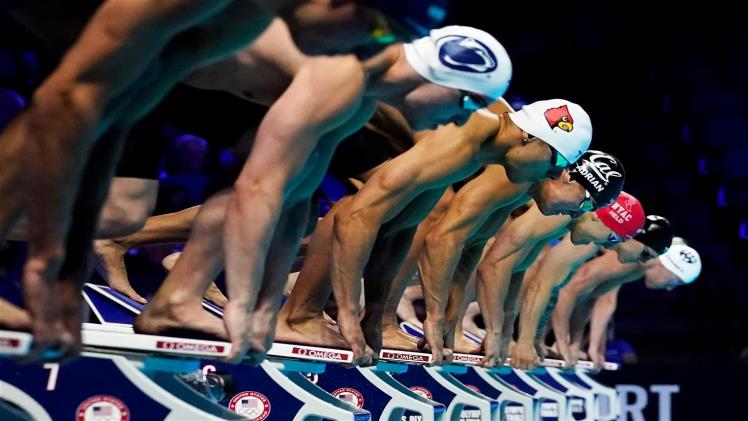Different Categories of Olympic Swimming

The different categories of Olympic Swimming include freestyle, backstroke, and butterfly. The Backstroke is the most popular and is a rotation towards “belly-up” swimming. Breaststroke, on the other hand, dips the head completely under water to glide. Both freestyle and butterfly have prelims and finals. Swimming is one of the most popular sports, with more than 50 million participants annually. This article explains how the different categories of Olympic Swimming differ.
Butterfly is a form of swimming
The butterfly swim is an Olympic event that evolved out of the breaststroke. It was developed by multiple people, but the International Swimming Hall of Fame recognizes Sydney Cavill as the original inventor. The butterfly is a breaststroke-like technique that uses a simultaneous arm pull to propel swimmers into the air. The swimmer then recovers their arms above the surface of the water. The butterfly is very economical. It has several advantages over breaststroke.
Backstroke is rotated towards “belly-up”
The backstroke is a variation of the crawl. It is performed with the face upwards, and swimmers must break the surface of the water with their head at least fifteen meters from the start. The swimmer must then rotate their body toward “belly-up” and reach the wall with at least one hand. This is a common mistake made by many backstrokers. While a competitor may feel comfortable performing a backstroke while belly-up, a coach may want to emphasize this aspect of the swimming stroke.
Breaststroke swimmers dip their heads completely under water to glide
The underwater phase of the breaststroke is a critical part of the swim. FINA rules define this phase as the time between the start and the first arm stroke when the swimmer is under water. In some events, the swimmer may perform a butterfly kick during the first arm stroke and the second. Some athletes will also use a breaststroke kick in the underwater phase of the start. Several studies have examined the propulsive and gliding actions of the swimmer’s body during the underwater phase of the start.
Freestyle is contested over a prelim and a final
In Olympic Swimming, the freestyle event is contested over a prelim and final. The fastest eight swimmers from each heat advance to the final. In events over 400 meters, no preliminary heats are held, so the top eight finishers from each heat are straight into the final. In the prelims, swimmers are seeded according to their qualifying times. The fastest swimmers start in the center lane of the pool and race against each other for the final.
IM races feature lead changes
Most of the time in an Olympic Swimming IM race, there are lead changes throughout the race. This is especially true in the 200-meter and 400-meter individual events. In order to improve your time in a race like this, you must focus on the start and the turns. You must make sure to learn how to swim these events well. If you have no idea how to swim an IM, read this article.
Relays are contested over a prelim and a final
Relays are races contested over a prelim and / or a final. A swimmer does not have to qualify for the prelim to compete in the final, but can do so if he/she does not place high enough in a prelim. Eight athletes can win a gold medal in a relay. These events are contested over a prelim and a final.
Referees have to keep track of swimmers’ times
The timing of a race is important because swimmers need to know when to start and stop. A starting platform, a deck, or the water is used as the starting position. A swimmer who is starting outside the water must place one foot on the front of the platform and keep it in contact with the water. Those who are starting in the water must maintain contact with the starting platform while on the blocks.
